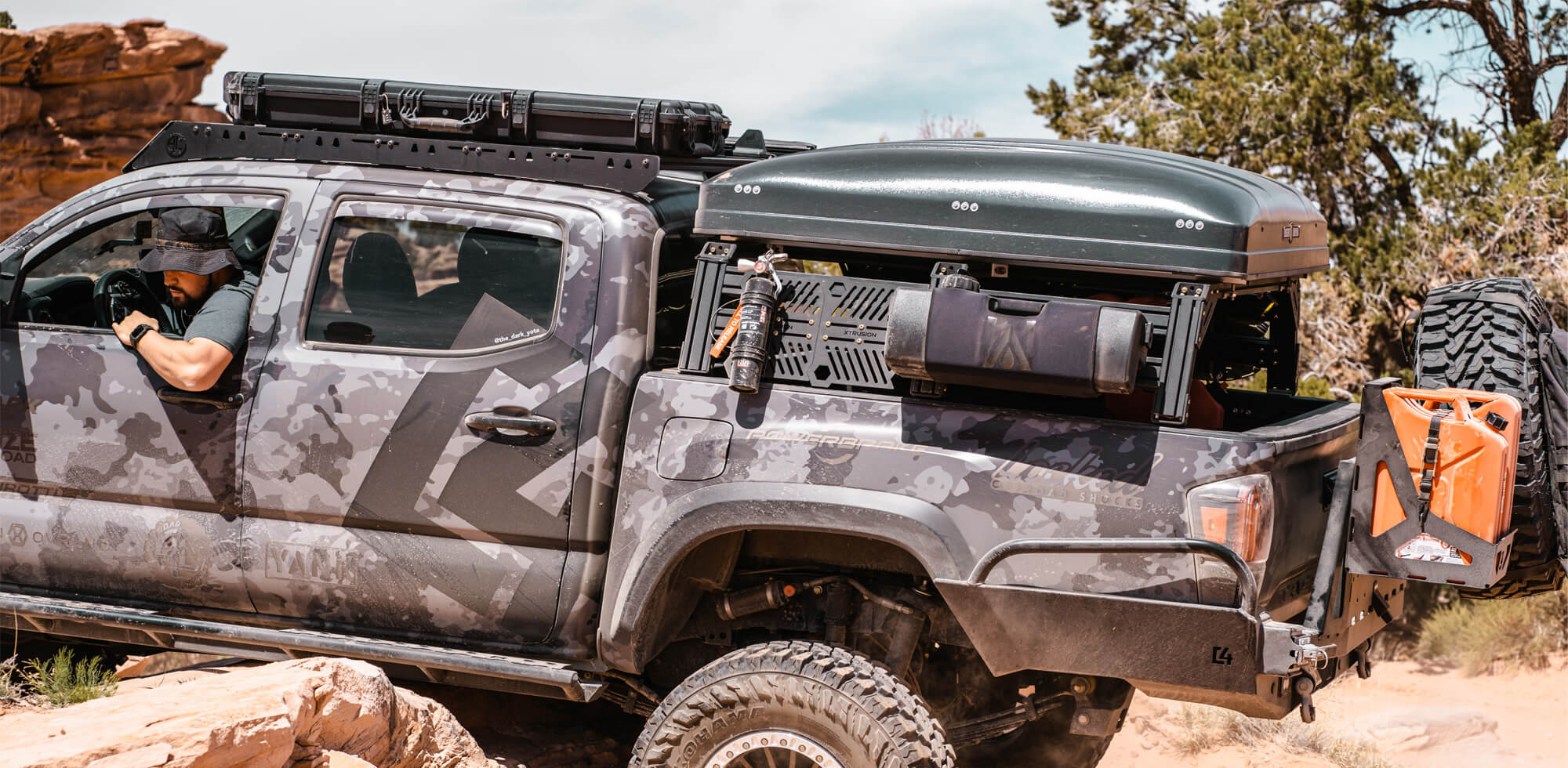Don't let a backfire or fuel leak ruin your years of hard work
Mustang Monthly/Mark Houlahan | Jul 18, 2013
We attend a lot of Mustang shows, and as we walk the rows of pristine show cars, weekend rides, and daily drivers, we usually see that a majority of the show attendees have a fire extinguisher either in their Mustang or alongside it (a popular spot seems to be in front of the left front tire, but we’ll discuss that a bit later). It’s nice to think that if something bad happens at the show, one of these Mustang owners will jump into action and help save the day. Or will they? Just because there’s a fire extinguisher at the ready it doesn’t mean the day (or your Mustang) will be saved.
There are a lot of variables to consider. How old is the extinguisher? Does it have the proper charge/pressure? What type of suppression agent is in the unit and is it right for the fire? Is there enough suppression agent to put out the typical fire? Is the fire extinguisher in proper working order? Is the fire extinguisher easily accessible? Lastly, does the person grabbing the fire extinguisher know how to use it? These are all good questions—ones we’ll help explain so you know what to look for in a quality fire extinguisher, where it should be located, how to test/service the unit, and most importantly, how to use it.

Our goal here is to help owners protect their Mustangs, shops, garages, and personal property—and prevent property loss and personal injury—from a fire. If we can save just one person from burns or save a single Mustang from becoming a “car-b-que,” we’ve done our job.
We know that regular show attendees and Mustang Club of America members are aware that most any show registration these days requires a fire extinguisher to be in the car on the show field. But what about readers who are more into cruise nights, or own a late-model daily driver and don’t go to shows at all? Yes, you. You should have a fire extinguisher in your Mustang as well. Frankly, that goes for every car in your driveway. We know that it can get expensive outfitting every car with a quality fire extinguisher, but what price can you put on preventing your pride and joy from burning to the ground or ensuring a fire is put out before it has a chance to hurt a loved one.
Photo Gallery

Data from the National Fire Protection Association states that in 2011 there were 219,000 vehicle fires causing 300 deaths and 1,190 injuries with a total property loss of $1.4 billion dollars. That’s a vehicle fire reported every 144 seconds in the U.S. In 75 percent of the recorded incidents, the fires were caused by mechanical failure or electrical malfunction. Now think about driving an older vehicle (and remember, Fox Mustangs are over 20 years old) with oil leaks and brittle, frayed wiring or poor aftermarket wiring add-ons. Quickly, one shorted out wire can turn into an under dash fire as you head down the road to a show. Having a fire extinguisher in the car could mean the difference between having your Mustang towed home and buying a replacement dash harness or sitting on the side of the road watching your Mustang go up in flames. Even if you call the fire department as soon as you’ve come to a stop and exited the vehicle (which you should ALWAYS do first), the response time paired with finding your exact location means all the difference between a small fire you can easily extinguish or a fully involved fire.
Hopefully, we’ve convinced you to get off your wallet to buy a fire extinguisher, but don’t run out the door just yet. We have some educating left to do. First and foremost is the type of extinguisher you’ll need, the capacity of the extinguisher, and the construction/quality of the unit. These factors aren’t just to get you to spend more money, but to invest in better equipment. When it comes to the actual suppression agents, there are two readily available types. The most common is a dry chemical powder. This is what you’ll find in your typical office fire extinguisher or possibly what you bought for your kitchen at home. Dry chemical extinguishers are good for typical Class B and C fires, which are flammable liquid and electrical fires respectively (more on fire classes in our sidebar). They put out the fire by smothering the flames. However, dry chemical extinguishers leave behind a powdery residue that is corrosive to surfaces, electrical wiring, and more, which is why they are not used in aviation and should not be used in your vehicle. If cleanup isn’t performed immediately, you’re looking at paint damage, wiring replacement, and more.
A better alternative is the aviation-style clean agent Halotron 1, which leaves no corrosive residue when used to extinguish a fire and does not damage paint surfaces or wiring. Halotron 1 is widely used in aviation, both onboard and for ground crew firefighting due to its effectiveness, no damaging residues, and its low ozone/global warming potential. Halotron 1 is what is now used in place of Halon, a product you might have heard of for its use in commercial fire safety systems in sensitive electronics/control rooms. One of the biggest proponents of Halotron 1 use is H3R Performance. Originally used in their aviation division, they’ve been promoting Halotron 1’s benefits through their line of HalGuard extinguishers for automotive use. HalGuard/Halotron 1 is perfect for automotive use as it is designed to extinguish flammable liquids and electrical fires and is non-conductive. HalGuard/Halotron 1 is a liquefied gas that turns into a gas vapor when discharged. This liquefied gas will reach hard-to-reach fires deep in engine compartments, through air vents, and so forth.

Photo courtesy Steve Turner Remember when we mentioned the fire extinguisher on display in front of the front tire at car shows? We’re not sure where this practice started (we suspect the AACA, but could find no evidence of such rule) but it is one we feel can cause problems. Displaying an extinguisher on the ground like this often leads to owners forgetting they are there and driving over them. At the least it ruptures and you’ve ruined your fire extinguisher. At the worst it breaks the valve off and 140 psi of pressure catapults the cylinder into the side of the car next to you. Our opinion: leave them in their mounting brackets.
Photo Gallery

As you can see, we highly recommend a fire extinguisher with Halotron 1 as the suppression agent. But just as important as what is inside the fire extinguisher is what’s on the outside. Look for a quality steel cylinder with all metal valve/siphon tube construction and a pressure gauge. Some lower priced “big box store” fire extinguishers use plastic control valves/handles and siphon tubes. The plastic gets brittle with exposure to sun and age, and the siphon tube can crack or break free due to normal vehicle vibrations. The last thing you want to do is reach for your fire extinguisher, pull the pin, and the handle breaks off in your hand or there’s no deployment of the suppression agent due to a cracked or broken siphon tube (think of drinking through a straw that has a crack in it). A pressure gauge is the best way to tell that a fire extinguisher is not only properly charged but is not overcharged when refilled. Some lower priced units come with a simple “test button;” push and if it pops back out, the fire extinguisher is OK to use. Never discharge a fire extinguisher to test its operation. Once you’ve deployed some of the suppression agent, the fire extinguisher will quickly lose its pressure and effectiveness. You’re better off deploying the complete bottle to ensure the fire is extinguished.
Most Mustang owners we queried mount their fire extinguisher in the trunk (some simply have it loose or in a trunk tool bag). While the trunk isn’t necessarily a bad place, the quicker you can get to your extinguisher, the less chance the fire has to grow and damage your vehicle. A fire extinguisher should never be left loose to roll around in the trunk or on the vehicle’s floor because it can damage sheetmetal or injure you in an accident. There’s also greater potential for accidental discharge as well. A better solution is to mount the extinguisher within your reach in the passenger compartment. Popular mounting locations include the top of the transmission tunnel (non-console cars), in front of the passenger seat, the kick panel area, and on a roll bar (if installed). An extinguisher can be mounted vertically or horizontally, but overall accessibility should be paramount in deciding where to mount it. It should go without saying but we’ll mention it anyway—do not mount your fire extinguisher under the hood. The majority of vehicle fires start under the hood and the extinguisher will do you no good when it’s surrounded by fire and unobtainable without injury.
OK, so you’ve got a decent fire extinguisher, you’ve got it mounted properly and in an easy to access location, so what are the proper steps to take if indeed you are confronted with a vehicle fire? Rule number one is to evacuate the area of people. If you are driving down the road, pull over as quickly and as safely as possible, shut off the engine/fuel system, and exit the vehicle, ensuring all passengers get out as quickly as possible. Judge the size of the fire and determine if it is fightable. We all want to be able to save our prized Mustangs, but if the fire has already consumed the engine compartment and is moving fast, a standard 2.5-lb fire extinguisher is probably not going to put such a sizable fire out. It is best to simply err on the side of safety and get to a safe distance. DO NOT get back into a burning vehicle to retrieve any items. Your life or severe burns are not worth your iPod or favorite Mustang jacket. If the fire is containable, then you should grab your fire extinguisher (again, once all people are safely out of harm’s way), and follow the instructions for the unit. Now is NOT the time to read the label and determine how the unit works. Read the label and know how it works before you mount it in your car. As a general rule, remember this acronym: PASS, for “Pull, Aim, Squeeze, Sweep.” This stands for Pull the safety pin, Aim at the base of the fire, Squeeze the handles together to dispense the suppression agent (keeping the extinguisher upright), and Sweep the stream of agent from side to side.

We hope you never have to deal with a vehicle fire, but in the off chance you do, or you have the chance to help save someone else’s vehicle, you’ll be well equipped and well prepared to battle that fire and extinguish it before major damage or injury.
Fire Classifications
While you’ll find several fire class ratings for extinguishers, the two most common are “ABC” and “BC” class extinguishers. Some BC rated extinguishers will also be rated for Class A fires when a larger extinguisher is placed into service due to the increased amount of suppression agent found in the larger extinguisher. Generally, a BC rated extinguisher is what is required for automotive use. However, take note if you have any real magnesium vintage auto parts on your Mustang (valve covers, intake, wheels, etc.) that you should also have a Class D extinguisher to cover this combustible alloy.

Class A Wood, paper, cloth, trash fires
Class B Gasoline, oil, other flammable liquids
Class C Fires on live electrical equipment
Class D Combustible metals (IE: magnesium)
Class K Cooking oils
Additional Safeguards
It’s apparent that we can’t keep idiots off the road, so it is up to you to protect yourself from the texters, the morning breakfast eaters, and those that feel they need to be at the next red light ahead of you. Take into consideration your driving route. If there is an alternative way to work on some back roads that are less congested, consider leaving the house a few minutes earlier and take that instead of the big four-lane highway. If poor weather conditions arise, especially fog, rain, or icy conditions, slow down. If you feel it is too unsafe to drive, pull over or get off the highway and wait it out. Don’t be one of those drivers who goes 30 mph on the highway with the hazards flashing. There will always be someone going faster and you’ll be in their way. Let them have the accident, not you.

Keep loose items out of your car. Place them in the trunk. Don’t have loose 6x9 speakers on your rear package tray or a big pointy golf umbrella in the back seat. A firefighter friend of ours has seen these seemingly innate things cause bodily harm. If you must have beverages in the car, use an insulated cup with a “travel mug” lid that can be closed. Hard to believe, but we’ve actually seen drivers drinking morning coffee from a regular ceramic coffee cup!
For those of you with an EFI conversion in vintage Mustangs, be sure you’ve properly mounted and wired an OE-type inertia switch to cut off power to the electric fuel pump in case of a collision. You can find them on many EFI parts websites or directly from your local Ford dealer. Additional upgrades for vintage owners include steel bulkhead panels behind the rear seat and gas tank reinforcement/protection panels like Tank Armor.






